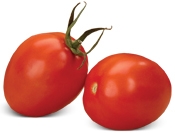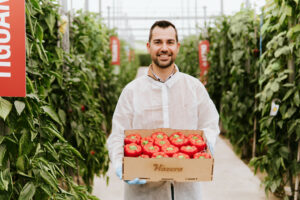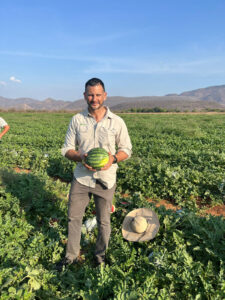by Babatunde William-Funmilayo
Question
I planted shanty tomatoes in my greenhouses in Nigeria. I need some technical information with regards the Shanty tomatoes. I also have a high rate of blossom end rot. I would also appreciate information on the variety’s yield and lifespan.
George
Dear William
Shanty tomatoes variety is a semi determinant variety developed mainly for outdoor bush or stacked tomato. It is also adapted to low greenhouses for a concentrated, short period of picking (2 months).
Density:
There are two ways of growing Shanty tomatoes inside a greenhouse. One is stacking without pruning (except one pruning in the first 2-3 weeks, so that each plant will remain with two branches). In this case we are cultivating a plant with less branches, that insures bigger fruits in the upper part of the plant at the end of the season.
The second growing method is pruning the branches so as to leave the plant with 3-4 branches, which results in bigger fruits in the growing season.
Fertilization:
You should the plant vigorously from the beginning, even before the first cluster fruit set. Shanty variety is a high yielding variety. If the plant is weak, it will not be able to feed all the fruits and they will remain small.
The soil must be rich with organic materials. Feeding at the beginning of the season, a week after transplanting, must be with balanced 20:20:20 fertilization, with 1500 gr/Ha/Day of N, which means about 7.5 Kg 20:20:20 /Ha. Every week you should increase the quantity until you reach 4000-3500 gr. pure N/Ha/Day 2 to 3 weeks before picking.
2-3 weeks before picking you should change the fertilizer rate to 2:1:3 of N:P:K, for example 17:10:27 with a quantity of 24-26 Kg/Ha/Day. This rate of high K insures high quality: color & firmness, even in the summer. If the temperature is high, increase the K, and fertilize with a higher K rate such as 2:1:4 N:P:K.
Blossom end rot (BER):
Tomatoes with an elongated shape are more sensitive to BER, and it is caused by a shortage of Calcium. To insure that the plants are not thirsty, we irrigate with a sufficient quantity depending on the soil structure (sandy or heavy), growing stage (beginning of the season or picking stage).
As for irrigation, I can’t give you remote recommendations, but please see the guidelines I wrote in chapter 5.
Shanti shelf life: the tomatoes will remain of good quality after 12-14 days under good picking conditions and suitable storage conditions, but not under very high temperatures.
As to the yield, it is difficult to estimate, because I do not have information about your specific growing conditions, but this variety can reach 80-110 tons / Ha.
I wish you successful growing,






